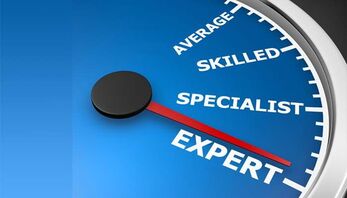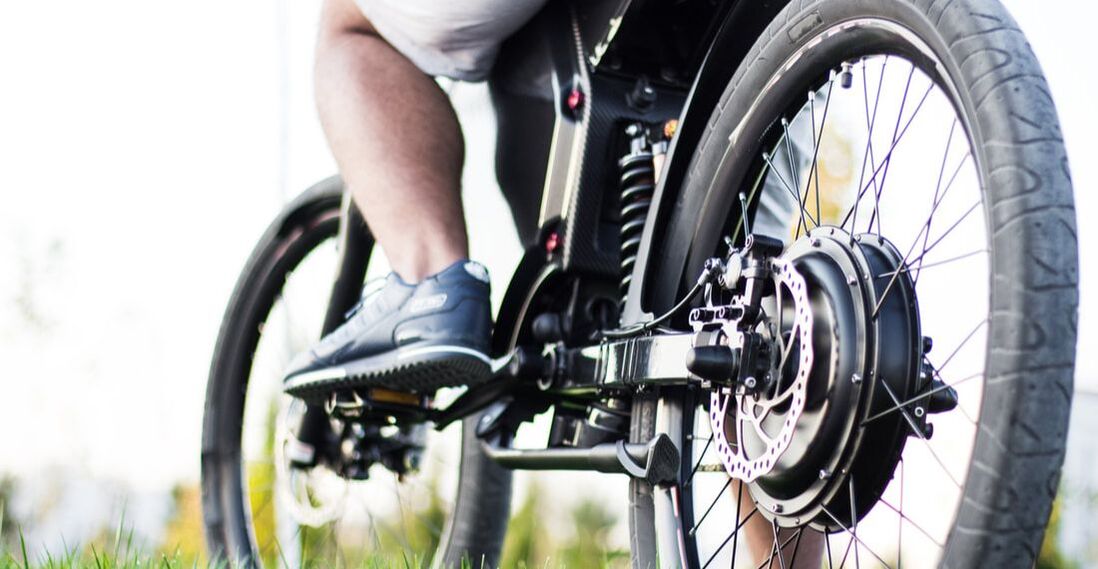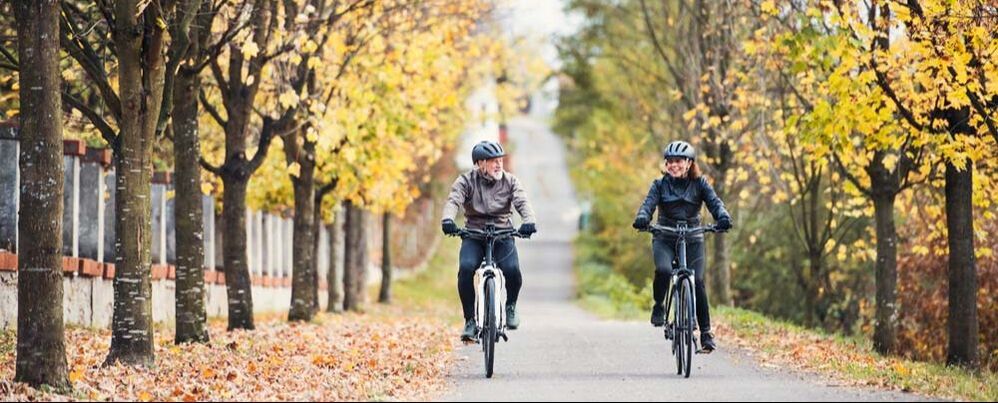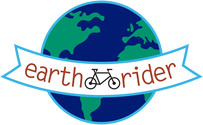 Riding an electric bike, or ebike, is a different experience from riding a non-assisted bike. Riding any bike provides a sense of freedom, allows you to enjoy time in the great outdoors, be active and get exercise, and you have a sense of certainty in getting to appointments. An ebike provides all these benefits, plus it allows you to get where you want to go with less effort, you’ll be less sweaty, take a chance on going longer distances knowing you will be able to get back home with no problem, carry a heavy load, and ride with a faster friend. But if you are new to riding an ebike, you should be aware of the differences so you are as safe and confident as possible starting with your very first ebike ride. Starting an Ebike Ride Ebikes are heavier than non-motorized bikes because of the addition of the battery and motor and the sturdier components, and because of this additional weight it is a good idea to start your ride in a flat, open area if possible. Make sure the saddle height is adjusted properly, your hands are firmly on the handlebars, you know where the brakes are and how to change the gears and the assist level of the motor. Take note of the direction the bike is pointed, and make sure the route is clear, you are not distracted, and are able to concentrate on riding. It is a good idea to begin pedaling in an easy gear with no assistance at all. After you get the bike going and you feel steady and in control, turn on the assistance starting with the lowest assist level. If you need the electric assist to get started, go ahead and use it, but be aware of your surroundings. Different ebike motors have different riding characteristics. If your ebike has a mid-drive motor, the ride will mimic a traditional bike when you begin to pedal and an assist mode is engaged. It will just feel like you are getting a small push. But if your ebike has a hub drive motor, you may begin pedaling and then experience a power boost when the motor and assist engages. After a few rides you will get to know the feel for your particular ebike. Ebike Gears and Motor Your ebike probably has two separate systems for speed and power and it is good to learn when to use each one. 1) Mechanical bike gears - There will be levers, known as trigger shifters or a twist shifter on the right hand to change the gears in the rear wheel. Just like on a non-assisted bike, the rear cassette has cogs that are very close together and you can change them to make it slightly easier or harder to pedal. On an ebike you would use the gears the same way. The most efficient pedaling speed is about 90 revolutions per minutes (RPM) and the goal is to pedal at the same pace even when the terrain changes. a) Use a lower gear when you go up a hill or if you find you are in a gear that requires you to work harder or slower than you want. b) Use a higher gear when you find yourself spinning the pedals too fast or you are on long, flat terrain and want to go faster. 2) Electric motor assist levels - There will be a button on your ebike display for changing the assist levels of the motor, from zero for no assist to whatever the top level your bike offers. If you use the lowest assist setting it will extend the range of your battery. It might be tempting to put the bike in a middle gear and use the motor when you want to go faster or up hills but this is not the optimum way to use the two systems at your disposal. Overuse of the battery will diminish the range and, depending how long your ride is, you may run out of charge on your battery. Battery Management Before you start your first ride you should be aware of what the manufacturer states is the range of your battery, knowing that that are many factors that will affect how long the battery will actually last on a ride. Some of these are the level of assist used, rider weight, wind, temperature, and the condition of the battery (older batteries do not hold a charge as well as a new battery). After a few rides and noting how far you traveled and the battery charge before and after your trip, you will have a better idea of the actual range based on your riding style. If you are planning a longer ride, you should manage the assist level you use so you do not run out of charge before you get back home. You can always pedal with no battery assist like a traditional bike, either on purpose for an additional workout or if you accidentally run out of battery power. Just be aware that since an ebike is heavy, it will be more effort to get moving without the motor. If your ebike has a throttle, which means the bike moves without any pedaling, know that this is a fastest way to drain the battery, so use it sparingly and only on short rides or when you really need it. Ebike speed Most people who ride any bike regularly do not spend as much time riding at the speeds an ebike is capable of. Ebikes generally can provide assistance up to 20 mph and some bikes are capable of going up to 28mph. Even if you are a fast rider, it is a different experience to work hard and spin your legs to get rolling fast and another to have a motor assist you in getting up to speed with little effort on your part. Be alert when riding an ebike at a fast speed and be on the lookout for hazards and traffic, both motorized or non-motorized. Remember that crashes at higher ebike speeds can be more serious. Be aware of the speed you are traveling when you want to make a turn. Attempting to make a right, left or u-turn at a high speed may make the bike difficult to control so it is a good practice to reduce speed as you head into a turn. Braking on an ebike Make sure you understand how the brakes work on your ebike. An ebike will take longer to slow down due to the increased speed and weight, so allow extra time when you want to bring your ebike to a stop. It is always a good idea to squeeze both the front and rear brakes for the best stopping power. Check your brake setup before and during your ride:
Riding an Ebike in Traffic
Ebikes are relatively new in some areas and many automobile drivers are not be familiar with the speed at which an ebike can travel. Drivers who are used to sharing the road with cyclists have an expectation about how fast a bike can go and may not recognize an ebike or understand that an ebike performs differently than an traditional bike. For example, a driver makes a decision whether or not to pass a cyclist before turning across a bike lane, but may incorrectly guess at the speed of an ebike. An ebike may be traveling faster than they expect and result in an unsafe condition. When a driver encounters a road cyclist in an aerodynamic position with drop handlebars wearing a cycling jersey and shorts they may be aware that this bike is traveling faster than others, but encountering a cyclist on what looks like a regular bike, sitting in an upright posture, wearing casual cloths and pedaling easily may not communicate to them a faster traveling pace. The best practice when riding in traffic is to ride defensively and predictably. What to Wear Riding an ebike No matter what type of bike you ride, electric or non-assisted, it helps to be equipped properly:
Comments are closed.
|
Earth Rider Blog about CycingAuthorSharon Kaminecki and others comment on adventures in bicycling and other stories Categories
All
Archives
August 2023
|




